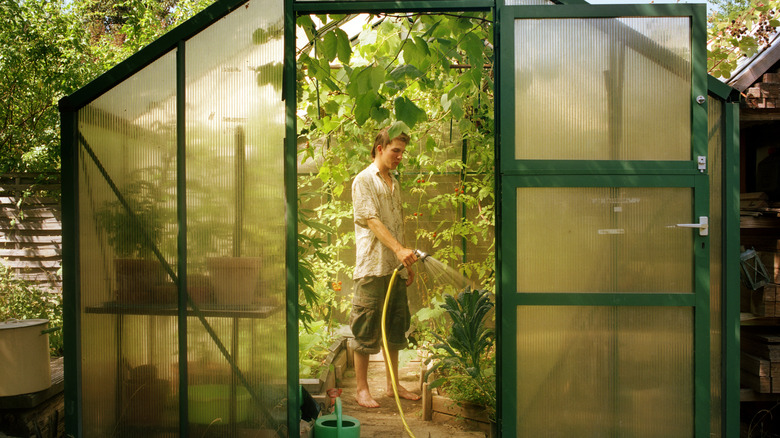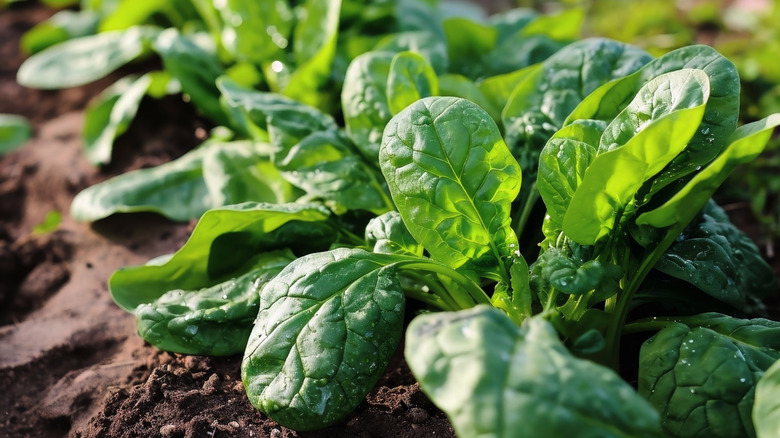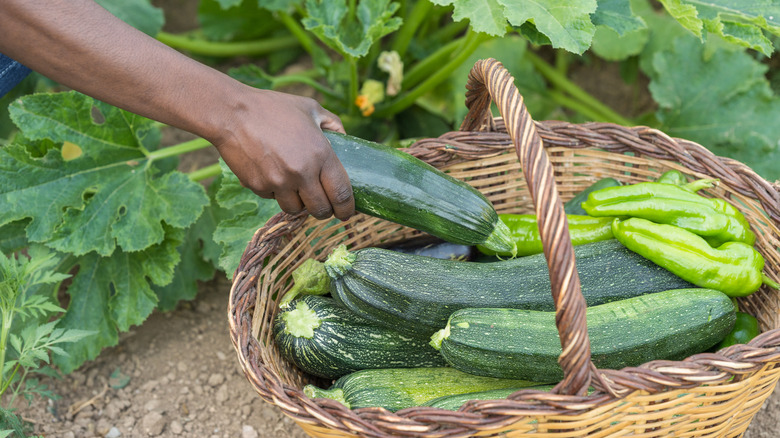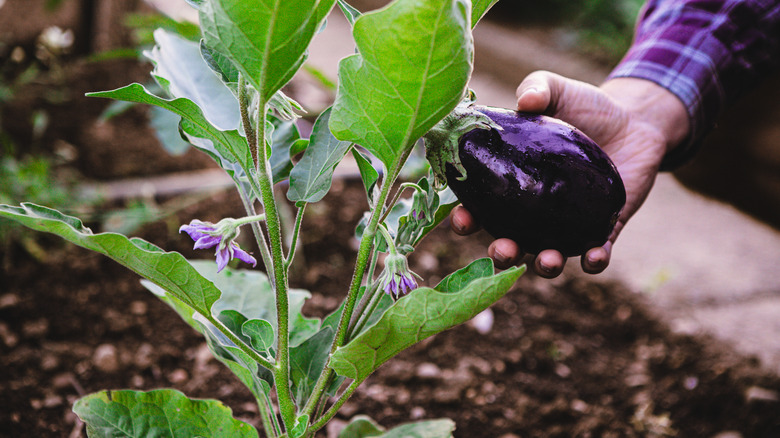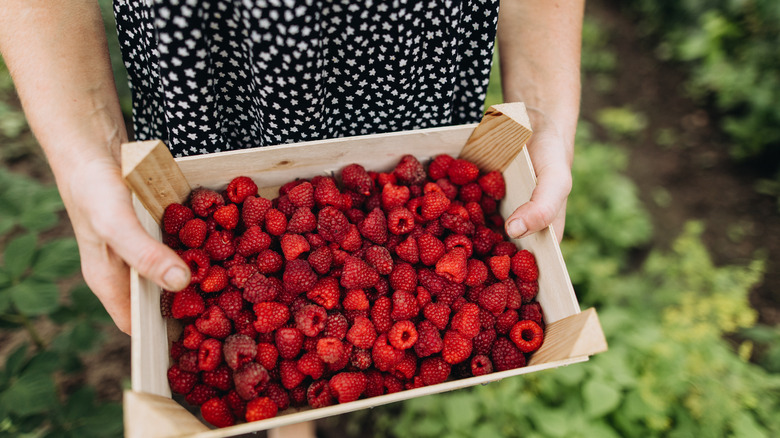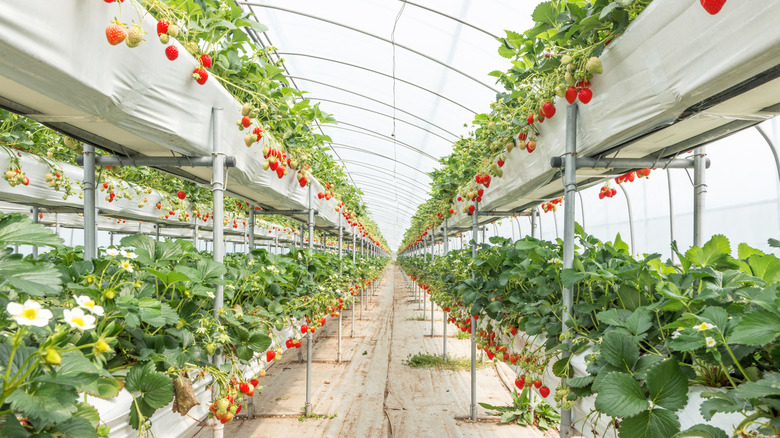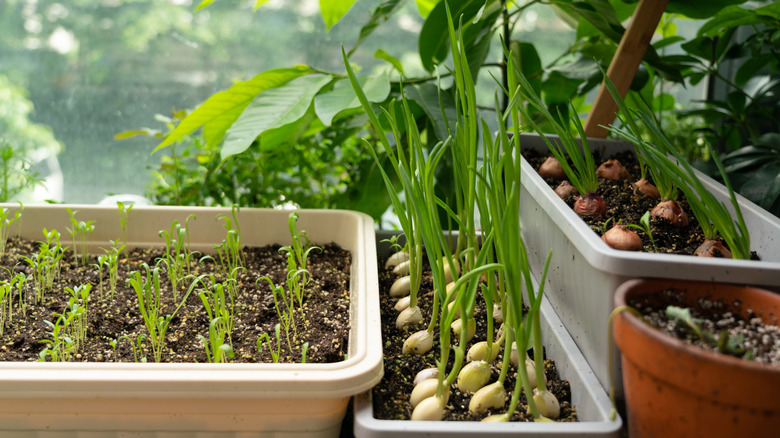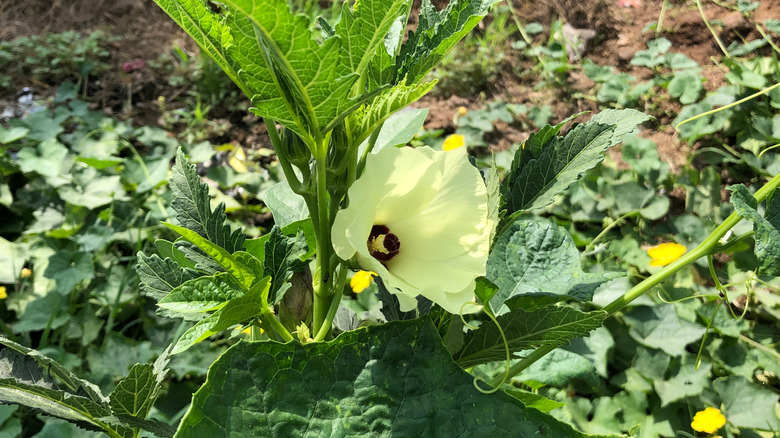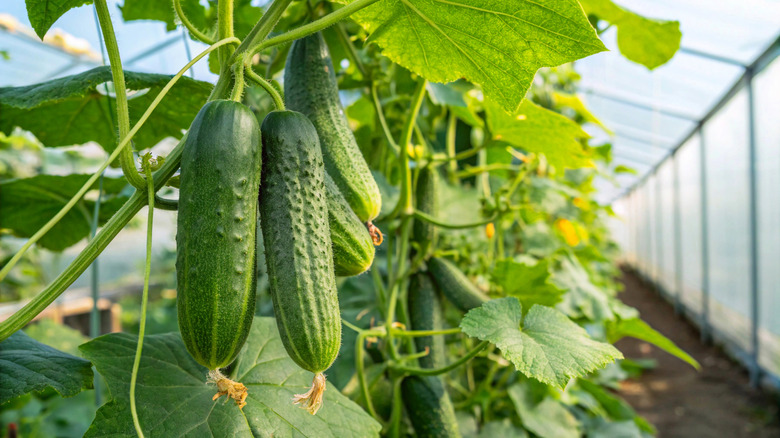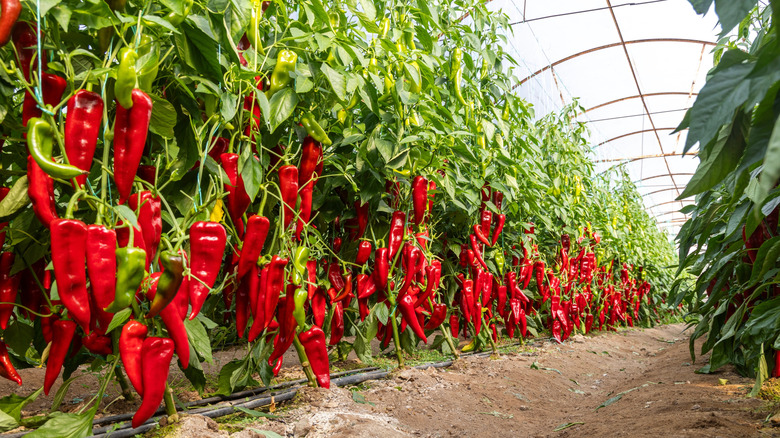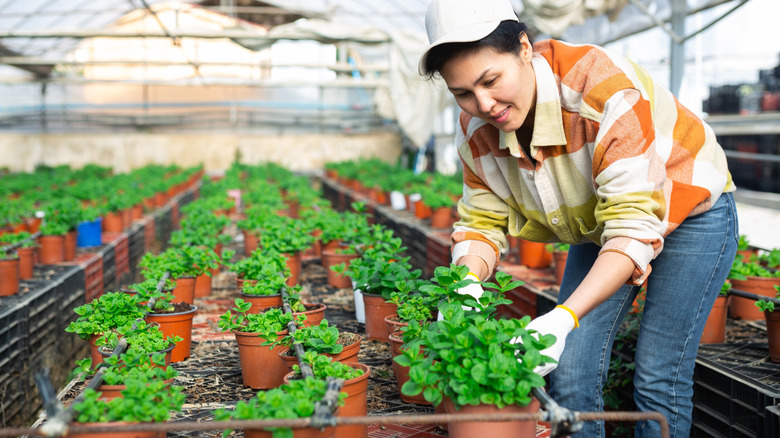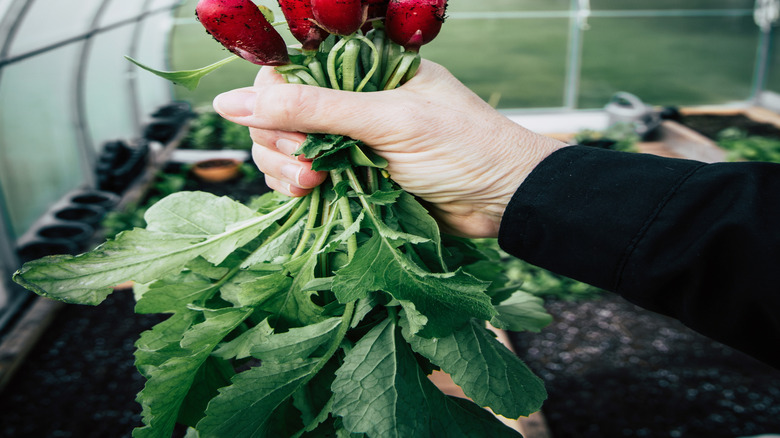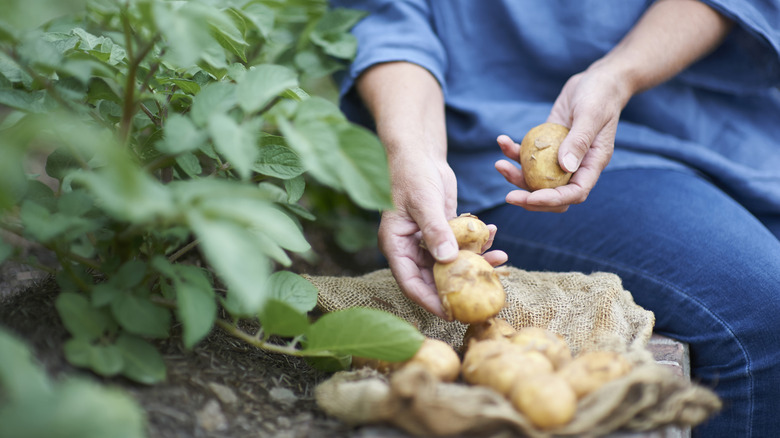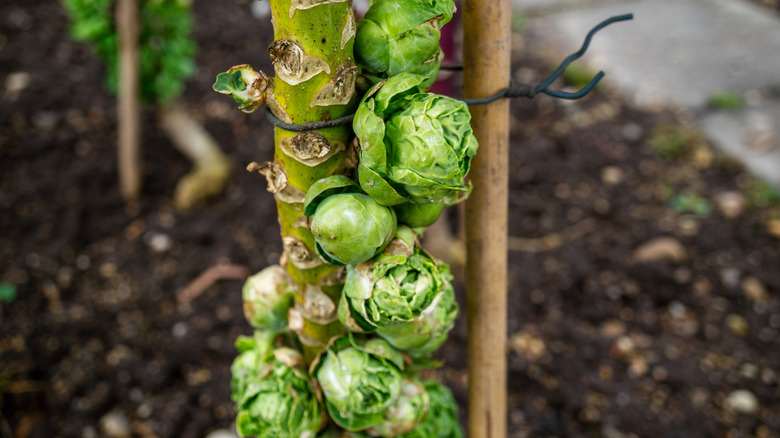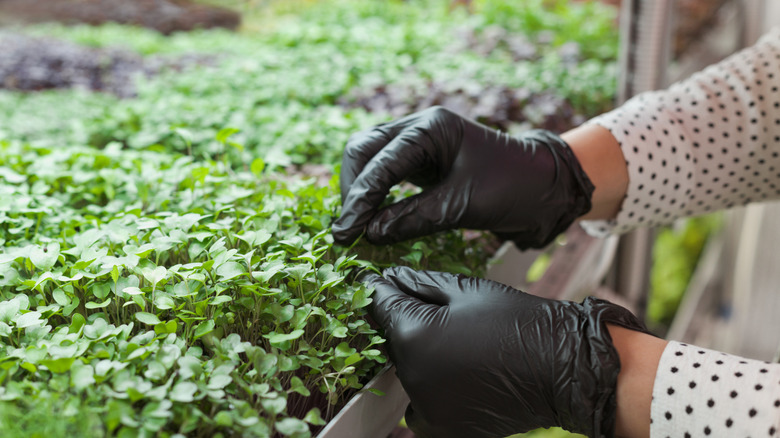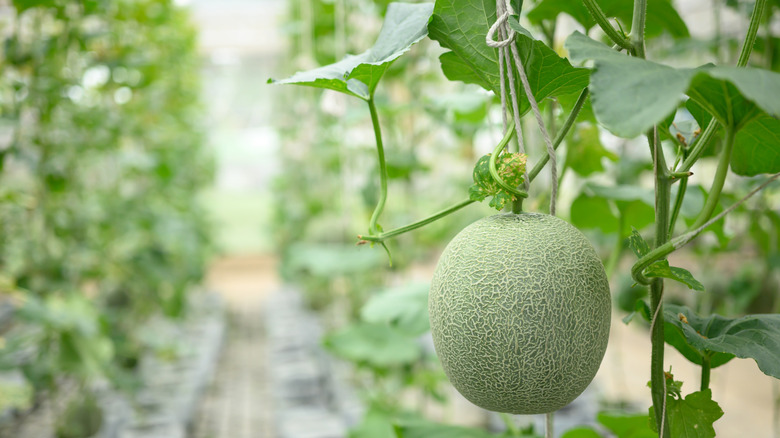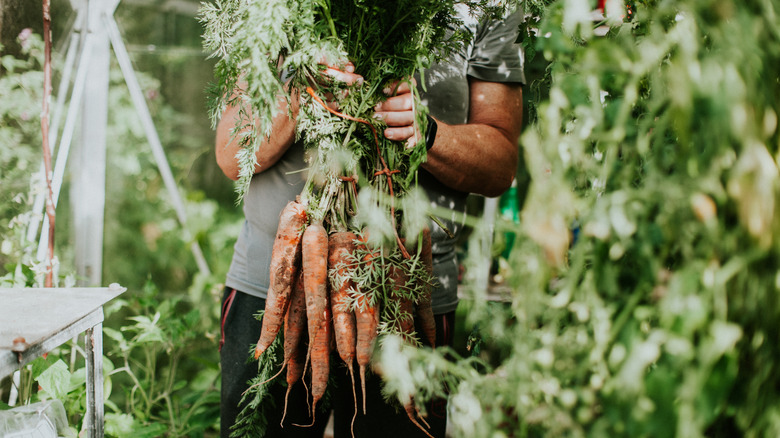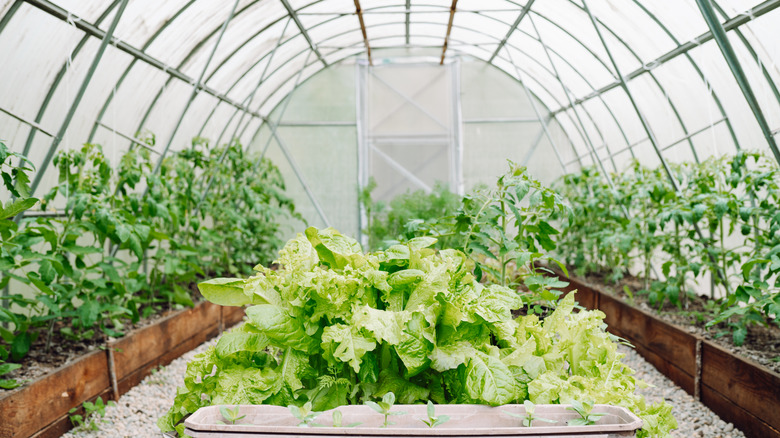18 Fruits & Veggies That Grow Best In A Greenhouse Garden
A patio greenhouse has the opportunity transform your yard and keep your refrigerator stocked from season to season. Not only can greenhouses add character and charm to your outdoor space, but they can also be extremely beneficial to the wellbeing of your beloved plants. From extended growing seasons to protection from the elements and unwanted pests, there are several of reasons to consider moving your plants into a greenhouse. This flexible style of home gardening allows you to grow your own fresh produce all year long.
A key to a successful greenhouse is lots of planning, whether that looks like organizing your greenhouse to maximize space or carefully selecting which fruits and vegetables are best suited for your specific growing conditions. Plenty of plant varieties grow happy and healthy in greenhouses' controlled, consistent environments, but some will do particularly well. Here are 18 fruits and vegetables that thrive in greenhouse gardens, and the added benefits that come with growing them indoors.
Spinach is a low-maintenance superfood
If you're looking for an easy going green that will thrive in your greenhouse garden, spinach (Spinacia oleracea) is a great place to start. Spinach plants love indirect sunlight, making greenhouses the perfect environment for the fast-growing leafy green. Spinach is also very tolerant of colder temperatures, so they can grow successfully during cooler months in your greenhouse. You can get multiple yields from a single spinach plant as well, so even during slower winter seasons, greenhouse spinach can produce bountiful harvests again and again.
Tomatoes are a popular choice for a reason
When picturing plants growing in a greenhouse, it's likely tomatoes (Solanum lycopersicum) that first come to mind. Tomato plants are one of the most popular picks with greenhouse gardeners, and for good reason. Tomatoes thrive in the heat, so much so that you can find "hothouse tomatoes" that were grown in greenhouses all year long. Greenhouses provide tomato plants with adequate sunlight, regulated temperatures, and added protection from pests, which can yield healthy and abundant fruit. You can also extend a tomato plant's growing season in greenhouse environments.
Zucchini is fast growing and adaptable
Zucchini (Cucurbita pepo) is another vegetable that flourishes in the controlled environment greenhouses provide. The squash grows well in bright, warm environments and is widely considered a very easy vegetable to grow. Zucchini is another crop that can extend its growing season when grown in a greenhouse and can be harvested relatively quickly. Zucchini plants can be vulnerable to weather damage, like frost, so a greenhouse's added protection from the elements allows the plant to thrive. Zucchini also does well in container gardens, which can fit seamlessly into your greenhouse's design.
Eggplants can take the heat
Eggplants (Solanum melongena) are known to thrive in hot climates, and the added warmth from a greenhouse can give them the exact boost they need. Many gardeners consider greenhouses ideal for growing eggplants, as they can produce yields year-round in the right conditions. Eggplants are also known to be prone to stubborn pests, but a greenhouse's shelter can add an extra layer of protection from aphids, beetles, and worms, which can harm or even kill your plant. Overall, eggplants are generally easy to care for and can make a bountiful addition to your greenhouse garden.
Raspberries have plenty to give
Raspberries (Rubus idaeus) are well-loved by gardeners because they're known to produce large yields. A healthy raspberry plant grown in a greenhouse can keep your fridge stocked with decadent, home grown berries even as the seasons change. As temperatures drop, raspberry plants can still produce plenty of fruit, and in warmer months they will thrive in a controlled environment. Raspberry plants also grow well in pots and containers, so they can be easily transported inside of a greenhouse or moved around if you decide to rearrange.
Strawberries can bear fruit all year long
Strawberries (Fragaria ×ananassa) are another easy-going fruit that will thrive in your greenhouse garden. Like raspberry plants, strawberries can be grown all year long in a controlled greenhouse environment, even during the off season. Another perk to growing strawberry plants is they can do extremely well growing in small containers, so you can maximize your greenhouse's space. Some gardeners even report that strawberries grown in greenhouses are juicier and better quality than store bought strawberries, which can be expensive when out of season.
Onions are safer from pests in a greenhouse
Onions (Allium cepa) are versatile and easy to maintain but can also be prone to pest problems and fungal diseases. Choosing to grow onions in a greenhouse instead of exposed to the elements can help protect the plant from potential infestations. Onion plants take up very little space and grow efficiently with minimal fuss, making them a laid-back addition to your greenhouse garden. The controlled humidity levels in greenhouses can also encourage onion plants to prosper.
Okra can grow tall and beautiful
Okra (Abelmoschus esculentus) is considered a staple in many homes across the southern United States, and the warm, balmy conditions of a greenhouse are perfect for growing it. Okra plants like heat, humidity, and sunny spaces, and can also benefit from the extra protection from pests, like aphids. A healthy okra plant can grow up to seven feet tall and produce an abundance of okra pods, so they work best in taller greenhouses with a bit more space. They also boast delicate, edible flowers with cream-colored petals and a burgundy center.
Cucumbers can blossom early in a greenhouse
Cucumbers (Cucumis sativus) are another popular choice with greenhouse gardeners. They're considered easy to grow and yield big harvests, so a little bit of care can go a long way. Cucumber plants can benefit from greenhouse's warm climate and regulated levels of humidity. They grow well in raised beds of fertile soil, as well as pots or container gardens, so you have some flexibility when incorporating cucumber plants into your greenhouse's design. In warmer greenhouses, you can even extend the cucumber's growing season and plant them early for maximum yield.
Peppers grow more abundant in greenhouses
Some home gardeners are of the opinion that peppers (Capsicum) grow better in greenhouses than outdoors. The healthier the pepper plant, the more peppers you get out of a harvest, and greenhouses' warm climates are known to encourage bigger yields. Pepper plants need a consistent climate and don't do well with irregular weather patterns, but they can thrive in controlled greenhouse environments, safe from the elements. The shelter also prevents any animals looking to snack on your pepper plants from sniffing around your garden.
Mint is a refreshing herb you can grow in any season
Under the right conditions, pots of fresh mint (Mentha) can grow in a greenhouse all year long, regardless of the season. There are many different varieties of mint like classic peppermint (Mentha piperita) or vibrant spearmint (Mentha spicata), and most can be grown in compact pots that won't take up much valuable square footage. Mint plants are also known to deter certain types of pests and insects, so keeping them around in your greenhouse could be beneficial to your other plants' wellbeing as well.
Radishes grow faster in greenhouse environments
In ideal conditions like that of a climate-controlled greenhouse, radishes (Raphanus sativus) can grow at an accelerated rate and be enjoyed across multiple seasons. Radish plants are known to be low maintenance and suitable for even beginner gardens who are still finding their green thumb. This fast-growing root vegetable is tolerant of cooler temperatures, so you can enjoy their harvests in your greenhouse even in the off season. They're also a fairly compact plant that won't take up too much space.
Greenhouses help protect potatoes from frost
You can plant potatoes (Solanum tuberosum) in a large bag in your greenhouse and enjoy the benefits of an extended growing season. While potato plants outdoors usually are dormant in winter months, in the right conditions, you can grow them indoors year-round. The additional shelter of a greenhouse can help protect potato plants from frost damage and other elemental problems. Potato plants also take up less space when grown in a container inside a greenhouse as opposed to being planted in the ground.
Brussels sprouts are great for growing in winter months
The Brussels sprout (Brassica oleracea) is another great vegetable variety to plant in your greenhouse during months with lower temperatures. Their growing cycle means they might take a little bit longer to harvest, but they are a good plant choice for slower months when you have a bit more space at your disposal. Brussel sprouts are a prime candidate for companion planting, as they're particularly prone to pests. Planting something like mint nearby can act as a natural pest deterrent, encouraging a healthy ecosystem within your greenhouse.
Microgreens can be harvested lightning fast
Microgreens are great for growing in shallow trays inside of your greenhouse. Microgreens is a blanket term for young vegetable sprouts that are harvested prior to maturing — they're delicate, nutritious, and come in many different varieties. Microgreens are also one of the fastest growing plants you can nurture, since they're picked at such an early stage of growth. You can keep a constant rotation of microgreens inside your greenhouse, since they can sprout so rapidly. Popular varieties of microgreens you can grow include mustard (Brassica juncea), basil (Ocimum basilicum), and amaranth (Amaranthus).
Melons greatly benefit from the warmer climate inside greenhouses
Melon (Cucumis melo) plants love hotter climates, so the additional heat from a greenhouse can prove greatly beneficial when growing them. Like potatoes, you can grow melons in large bags in your greenhouse garden, where the extra heat and climate control will accelerate their growth. You can also start growing your melon plants earlier in the season when you grow them indoors, since greenhouses offer protection from weather damage. They are best suited for larger greenhouses with plenty of space, as melon plants can grow quite large.
Carrots are low fuss and disease resistant
With proper care, root vegetables like carrots (Daucus carota) can also grow well in greenhouse environments. Carrots are a favorite of greenhouse gardeners since they're easy to grow, low fuss, and immune to many types of diseases. Carrot plants are another crop you can grow during winter months, since they're tolerant of cooler temperatures. You can find carrots of different varietals and colors, from traditional orange carrots to purple, white, or yellow rainbow carrots. This easy-going root vegetable can add a splash of color to your greenhouse and provide bountiful yields.
Lettuce is inexpensive and straightforward to grow
Finally, lettuce (Lactuca sativa) is an easy and inexpensive crop to grow indoors in your greenhouse garden. Lettuce plants are flexible and can tolerate a decent range of temperatures, so you can grow them year-round with adequate care. Lettuce plants grown indoors often yield larger harvests, provide overall better-quality produce, and are less susceptible to pest damage or diseases. Homegrown greenhouse lettuces also often have higher water contents, so they will last longer in your refrigerator after you harvest them.
